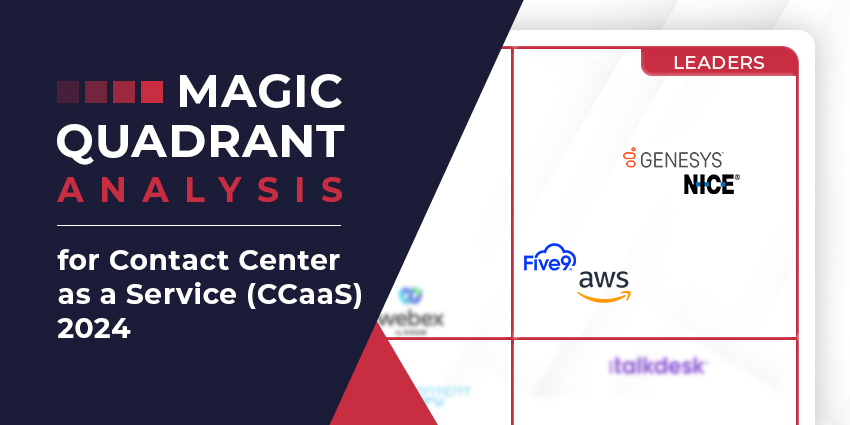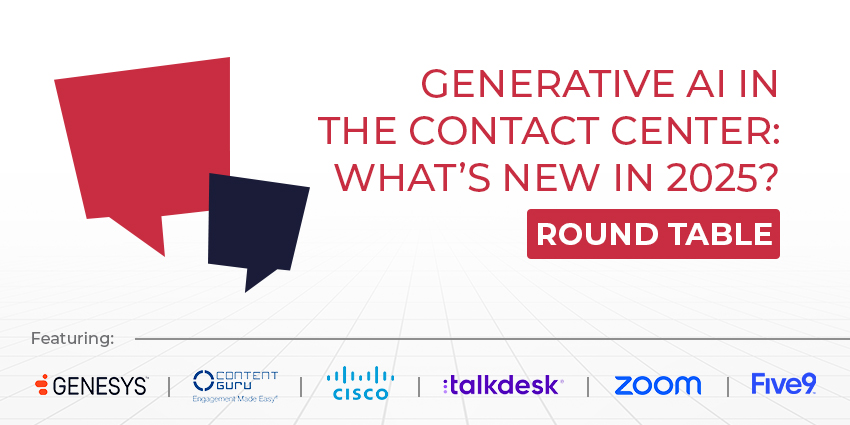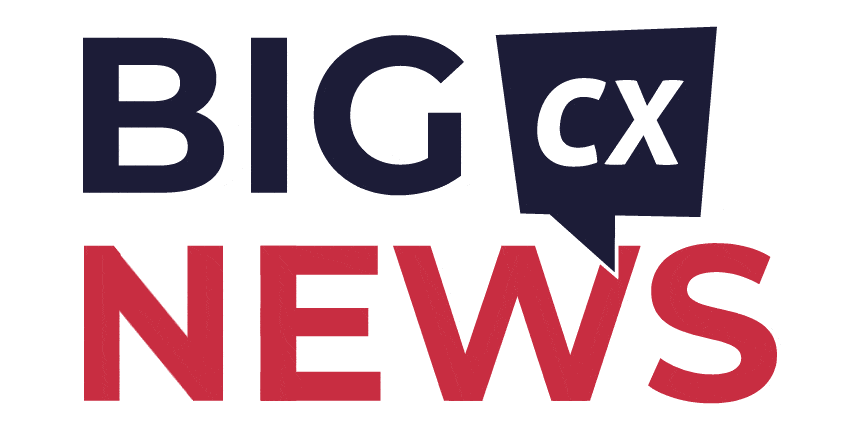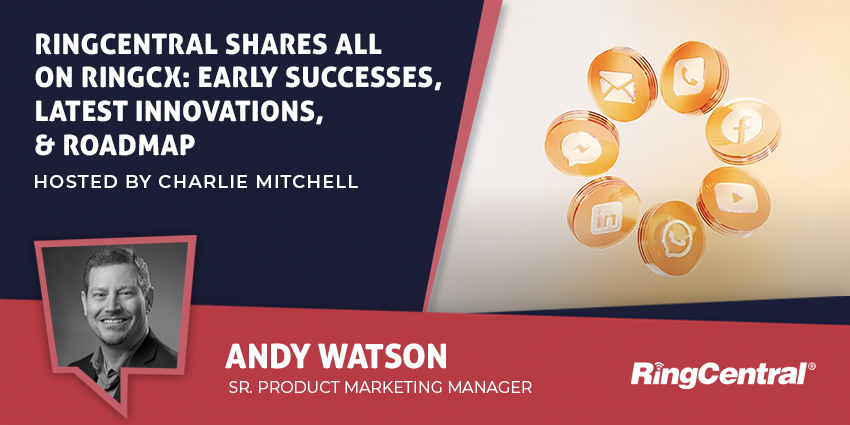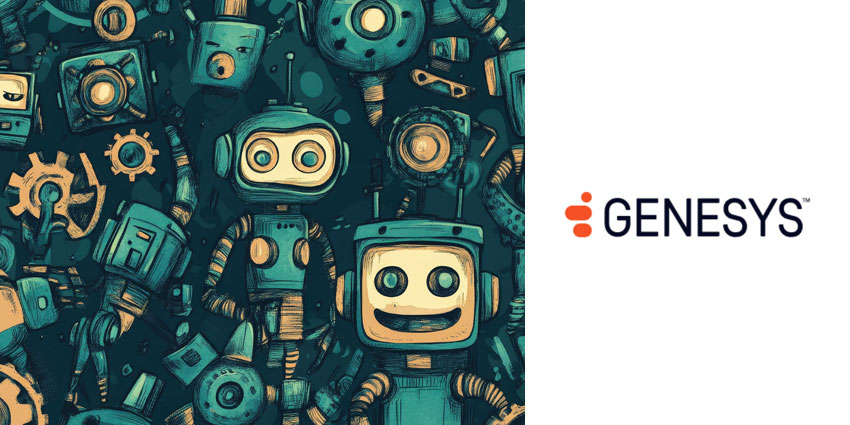In its CCaaS Magic Quadrant, Gartner evaluates the ability of nine prominent cloud contact center providers to meet the needs of global enterprises.
Until now, many of these larger organizations have stuck with their on-premise contact center infrastructure (CCI).
The underlying sticking point for many of these enterprises is that migrations from highly customized legacy environments are notoriously complex and cumbersome.
Recognizing this, Gartner notes that CCaaS vendors are acquiring adjacent technologies and striving to offer broader suites that will help them meet more specific requirements.
That’s critical as CCaaS becomes increasingly appealing, given the strategic emphasis on customer experience, the slowdown of on-premise innovation, and – of course – the rise of AI.
However, across different sectors and market segments, some vendors are better suited to deliver the full benefits of CCaaS than others.
Thankfully, in-depth market evaluations like the Gartner Magic Quadrant can offer an excellent resource to support customer service leaders in identifying the best-fit providers.
The Definition of Contact Center as a Service (CCaaS)
Contact Center as a Service (CCaaS) is an umbrella term for cloud applications that enable customer support teams to manage multichannel conversations.
The vendors included in the Gartner Magic Quadrant compile both native and third-party apps into CCaaS platforms, facilitating both human and virtual agent-led service experiences.
Yet, CCaaS platforms will also include apps that measure the quality of customer engagements, manage knowledge, and much more.
Some of these capabilities are evident in Gartner’s mandatory features list, which includes:
- Application and native communication connectivity that provides voice and data access
- Inbound call routing / automatic call distribution (ACD)
- Digital interaction routing (inc. email, live chat, SMS, and video)
- Pre-built and extendable reporting applications for agents and supervisors
- Workforce engagement management (WEM) apps (inc. workforce, quality, & knowledge management, agent-assist, call/desktop recording and analytics, and workflow routing)
There are many other standard CCaaS functionalities that Gartner doesn’t consider mandatory. These include outbound voice, self-service apps, CRM integrations, and real-time analytics.
Yet, the Magic Quadrant goes beyond capabilities alone. It also considers support services, customer feedback, sales execution, pricing, and more.
After mulling over all this, the analyst split its nine CCaaS providers into four quadrants: Leaders, Challengers, Visionaries, and Niche Players.
Here’s a rundown of how each vendor performed, with commentary reflecting Gartner’s findings.
Gartner Magic Quadrant Leaders
Leaders in the Magic Quadrant pair a broad CCaaS suite with a proven ability to serve and support multinational contact center operations. They can also demonstrate a large install base, above-average market growth, and the ability to flex across different levels of implementation complexities. This year’s Leaders are:
- NICE
- Genesys
- Amazon Web Services (AWS)
- Five9
NICE
In a recent Peer Insights study, Gartner named NICE its only “Customers’ Choice” CCaaS vendor, citing its extensive, worldwide customer support.
Again, the analyst highlights these support services for large-scale, global implementations as a core strength in its Magic Quadrant.
Additionally, NICE earns plaudits for its AI & analytics muscle, which flexes across CXone.
When clients pair this AI with the “vast amounts” of labeled customer intent, action, and WEM data on the platform, they can optimize the use cases across the contact center.
Finally, NICE has developed a “simple” UI and admin environment, product characteristics that customers often praise, according to Gartner.
Such customers include some of the world’s biggest brands, with NICE recently securing its place as part of a $578MN megadeal to transform the Southern Hemisphere’s largest contact center.
Genesys
Like NICE, Genesys specializes in large-scale, complex CCaaS deployments, boasting extensive experience in supporting multinational implementations.
Its large on-premise install base has helped pull massive enterprises onto Genesys Cloud CX, and the vendor has made the most of this advantage.
How? By developing “strong” tools, processes, and playbooks for migrating on-premise customers from Genesys Engage and third-party systems.
Thanks in part to these migration and support services strengths, Genesys has become one of only two tech providers to announce that it has surpassed $1.5BN in annual recurring revenue (ARR) for CCaaS. NICE is the other.
Gartner also spotlighted Genesys’s customizable solutions as a core strength. However, it surprisingly excludes Genesys’s co-innovation efforts with Salesforce and ServiceNow to inspire closer CRM and CCaaS integrations. That’s a big differentiator.
Amazon Web Services
AWS first released Amazon Connect as a set of CCaaS building blocks, enabling businesses to devise their dream cloud contact center platform.
However, in recent years, it has recognized that enterprises typically want most of the CCaaS stack to come pre-packaged. As such, it has advanced its overall proposition and stormed into the leader quadrant.
Nevertheless, AWS hasn’t forgotten its origins and still offers a highly customizable platform that businesses can tailor with in-house talent or developer partners.
Gartner recognizes this and the ability to scale that platform as continued strengths.
The analyst also notes how Amazon Connect is “agile for experimentation”. In other words, brands can test new capabilities – including generative AI use cases, self-service, and voice automation – without long-term commitments.
Finally, as in 2023, the analyst lauds AWS’s consumption-based model, which Samsung notably cited as a primary driver for deploying Amazon Connect in July.
Five9
In May, Five9 signed its largest-ever CCaaS deal with a Fortune 50 bank, serving 70MN customers worldwide. That exemplifies its broad market appeal.
After all, some have historically marginalized Five9 as a vendor that specializes in midsize contact centers. Yet, it now serves many global enterprises with incredibly complex requirements.
In doing so, it has – according to Gartner – developed “strong programs and tools” for moving organizations from on-premise environments to the cloud.
Additionally, it surpassed the $1BN in ARR for CCaaS earlier this year.
Yet, Gartner cites one other critical strength driving that revenue growth: Five9’s post-sale services that focus on driving continuous value.
Verified customers often note this in reviews left on the Gartner Peer Insights platform.
Gartner Magic Quadrant Challengers
Challengers in the Magic Quadrant typically have a large install base, broadly recognized strengths, and a referenceable ability to serve specific sectors or market segments. Yet, they may trail Leaders in their maturity of product capabilities, “multi-regional market approach”, or overall marketplace representation. This year’s Challengers are:
- Cisco
Cisco
Cisco offers CPaaS and UCaaS solutions alongside its CCaaS offering within its Webex portfolio.
These deliver significant value-add. For instance, with a UCaaS integration, contact centers can benefit from swarming, collaboration, and knowledge-sharing capabilities.
Nevertheless, for Cisco, the predominant focus is on merging its CCaaS and CPaaS platforms to better enable hybrid cloud contact centers, ensure closer integrations with enterprise systems beyond CRM, and extend the value of the Webex Contact Center. Jay Patel, SVP & GM of Cisco Webex, recently discussed this with CX Today.
Gartner recognizes such opportunities for further value within the Webex suite before pinpointing Cisco’s support services and agent well-being management as additional strengths.
In terms of the latter, Cisco’s “Agent Wellness” module stands out, monitoring stressful interactions and proactively triggering corrective actions, such as post-call breaks.
However, Cisco trails market leaders in failing to unify its admin interfaces and “relatively weak” service level agreement for the industry.
Gartner Magic Quadrant Visionaries
Visionaries in the Magic Quadrant often differentiate through innovation, delivery capabilities, and an original strategy for business development, marketing, and sales. However, they typically don’t have the size of Leaders and Challengers and may lack the resources to enable whole-hearted worldwide expansion. This year’s Visionaries are:
- Talkdesk
Talkdesk
Talkdesk offers tailored, sector-specific clouds for healthcare, finance, retail, and other verticals.
Each product aspires to provide tight integrations with the systems typically leveraged across each sector, with pre-built industry workflows.
As a significant differentiator, Gartner spotlights this industry innovation every year. However, in 2024, it also commends Talkdesk’s technical account and customer success managers.
According to the analyst, they are responsive and consultative, offering guidance so customers can better leverage the Talkdesk CX Cloud platform’s high customizability.
The final strength Gartner notes is in Talkdesk’s increasing business with large enterprises. Its “industry-first” GenAI Suite for on-premise contact centers – launched in March – may have helped boost this.
Nevertheless, the analyst suggests that Talkdesk’s limited reporting capabilities, restricted third-party tech partnerships, and “limited” footprint beyond North America and Europe mean it lags market Leaders.
Gartner Magic Quadrant Niche Players
Niche Players in the Magic Quadrant have established a presence in a crowded market. Some may also have experienced relatively strong growth, targeting specific verticals or market opportunities. Yet, their offerings are likely still undergoing significant development, relying heavily on partners to complete their propositions. This year’s Niche Players are:
- Content Guru
- 8×8
- Vonage
Content Guru
In 2023, Content Guru claimed to have secured the largest CCaaS contract of the year. Worth $150MN, this deal exemplified its expertise in providing support for massive, complex deployments.
Gartner references this experience in handling large-scale migrations. However, it doesn’t mention that it’s the only CCaaS vendor to achieve the FedRAMP “In Process” Designation at the High Impact Level. As such, it’s a must-consider provider for government deployments.
Elsewhere in the report, Gartner applauds Content Guru’s user experience and customer support, citing client inquiries and verified customer reviews on Peer Insights.
However, Gartner warns that Content Guru doesn’t publish a standard service agreement or information regarding missing availability. That’s a caution despite reference customers citing its high service availability and platform resiliency.
Other warnings include its limited support outside of Europe and complex pricing, which follows a layer cake model that can – over time – add to ownership costs.
8×8
8×8 excels in midmarket enterprise deployments. As CX Today reported in August, the vendor announced a 35 percent year-over-year (YoY) surge in CCaaS deals with this segment.
Gartner picks up on this, summarizing its strategy as offering a deep set of “good enough” features that pull on the vendor’s merits in UCaaS and CPaaS.
Yet, 8×8 doesn’t just leverage its own UCaaS solution. Indeed, the provider also offers a natively-developed Microsoft Teams integration.
Again, this likely appeals to midmarket businesses that wish to buy CCaaS as an extension of UCaaS.
Finally, Gartner notes data aggregation as a cornerstone strength for 8×8, bringing together customer databases to enable deeper analytics and new routing capabilities.
Nevertheless, the analyst does question 8×8’s fit within contact centers of more than 300 agents, while the lack of industry know-how among its channel partners remains a concern.
Vonage
Like 8×8 and Cisco, the Vonage Contact Center benefits from close, native UCaaS and CPaaS integrations that extend the CCaaS offering.
Together, these solutions are part of Vonage’s “programmable communications platform strategy”, which may help Vonage differentiate through mobility.
However, a much more obvious strength for Vonage – as Gartner picks up on – is its Salesforce Service Cloud interface.
Another is in its optimized capabilities for the midmarket. A possible example of this is in the new Vonage Contact Center (VCC) Intelligent Workspace, which optimizes agent experiences by allowing them to seamlessly toggle between tabs and screens.
However, Gartner raises concern over the lack of multilingual support in the admin UI while noting native reporting challenges and a heightened reliance on its CRM partners.
What Has Changed Since 2023?
Gartner notes that it has made several changes to the 2024 CCaaS Magic Quadrant. As such, it cautions against year-over-year comparisons.
That said, in terms of the groupings, not much has changed since the 2023 edition.
Cisco has shifted from being a Niche Player to a Challenger, while Content Guru has moved in the opposite direction.
Yet, the remaining vendors have stayed in the same quadrant as 2023, with only marginal shifts across the individual squares.
Perhaps the one other notable change is that NICE and Genesys have extended their lead at the top right-hand corner of the quadrant. However, these are only fractional movements.
That seems surprising, given the speed of innovation within the CCaaS space and the scoring alterations.
However, 2025 may be the year Gartner shakes up this Magic Quadrant, given the momentum of other global vendors, including Bright Pattern, Sprinklr, and Zoom. There is also the small matter of Microsoft and Google recently entering the space.
So, watch out for some of these names in next year’s overview as they hit more of the analyst’s entrance criteria.
Deep dive on more of CX Today’s rundowns of the Magic Quadrant reports below:
- Gartner Magic Quadrant for the CRM Customer Engagement Center 2023
- Gartner Magic Quadrant for Voice of the Customer (VoC) Platforms 2024
- Gartner Magic Quadrant for Communications Platform as a Service (CPaaS) 2024
